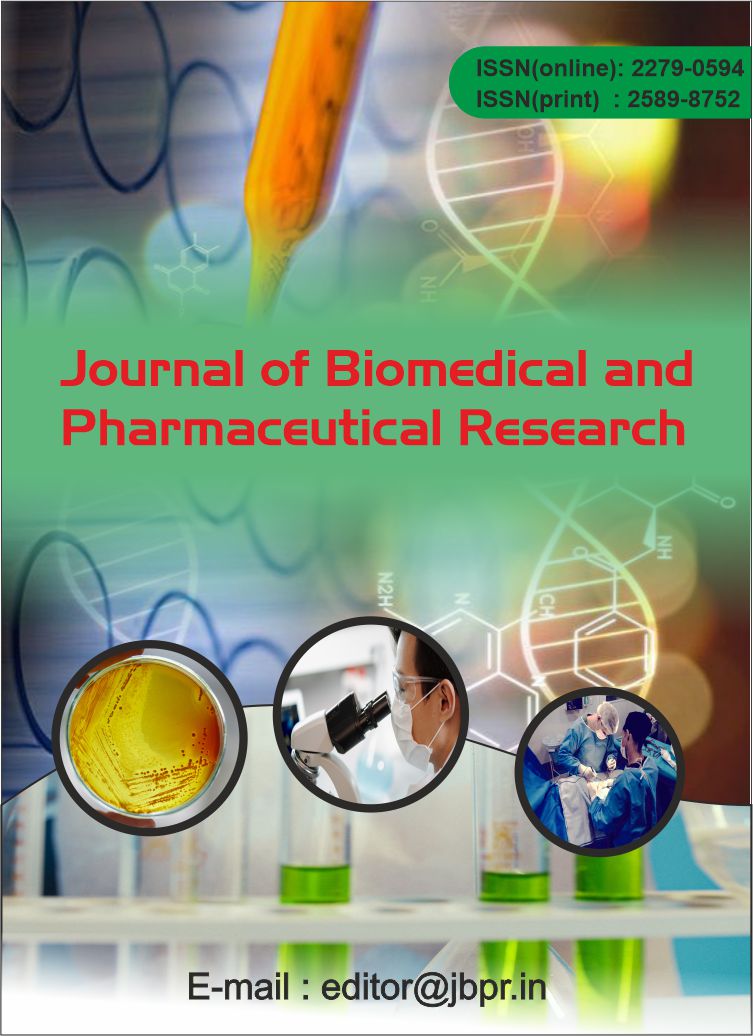DRUG USE PATTERN IN MANAGEMENT OF RESPIRATORY EMERGENCIES IN MICU-A PROSPECTIVE OBSERVATIONAL STUDY
Abstract
BACKGROUND: Drug utilization studies are useful tool to facilitate rational prescribing of drugs. The objective of the study is to analyze drug utilization in respiratory emergencies using WHO Prescribing Indicators, in Medical Intensive Care Unit. PURPOSE: To study the prescribing pattern of drugs used to treat respiratory emergencies in Medical. Intensive Care Unit (MICU) department in MVJ Medical College and Research Hospital, Hoskote. METHODOLOGY: The study was conducted on gaining approval for the proposed protocol from the Institutional Ethical Committee (IEC). Informed Consent (IC) was taken before commencing the study. Basic demographics, medication related details were collected using the Case Report Form (CRF). “Respiratory Distress Observation Scale” (RDOS) was used to evaluate respiratory and heart rates. WHO Prescription indicators was used to study the number of drugs per encounter, percentage of drugs prescribed by generic name, percentage of encounters with an antibiotic, percentage of encounters with an injection, percentage of drugs prescribed from the essential drug list. RESULT: Out of the 80 patients enrolled in the study, 50 of the patients were above or equal to the age of 65, and 30 were under the age of 65. Total number of drugs prescribed to the patients was 668, out of which 324 was antibiotics, 112 were corticosteroids, 179 was Beta-2 Adrenergic Agonists & Anticholinergics and there was 53 Methylxanthines. Average drug per encounter was found to be 8.3 per encounter whereas the percentage of encounters with antibiotics was found to be 52% per encounter; which are both higher than the WHO recommendations. Out of the 80 patients who were enrolled in the study, 59 were chronic smokers versus the 21 nonsmokers. The most prevalent cause of ICU admission was COPD as 47 of the total cases were suffering from the illness itself or along with co morbid conditions (such as HTN, CKD etc). Based on the RDOS 74 patients had a rating higher than 3 at the time of admission and 77 had a rating lesser than 3 at the time of discharge from the ICU. Few to none of the cases were sent for bacterial culture sensitivity test and empirical therapy was initiated in almost all the cases. CONCLUSION: The management of respiratory emergencies lies on use of antibiotics, corticosteroids, nebulizers and Methylxanthines. Use of IV corticosteroids did not show any difference in the treatment outcome of the Regimens; Theophylline and Doxophylline comparison showed no significant difference in the measurement of therapeutic outcome. The average drug encounter per prescription was found to be higher than the ideal range of WHO recommendations. This along with the observation on rational use of antibiotics and use of IV route of administration which were both much higher than the ideal range recommended by WHO, suggests a change in formulating therapeutic regimens. We conclude that irrational of antibiotics and corticosteroids will only result in increase of cost of the treatment as well as the duration of therapy along with increasing the chances of patients developing resistance to antibiotic therapy. Also use of IV steroids highly affects the patient’s immune system thereby enhancing the chances of further infection and relapse. Initiation of empirical therapy is advised only till the culture sensitivity tests are done. However further large scale research is needed to confirm this conclusion.
Keywords: Respiratory emergencies, RDOS, Drug use pattern, WHO prescribing indicators
![]() Journal of Biomedical and Pharmaceutical Research by Articles is licensed under a Creative Commons Attribution 4.0 International License.
Journal of Biomedical and Pharmaceutical Research by Articles is licensed under a Creative Commons Attribution 4.0 International License.





